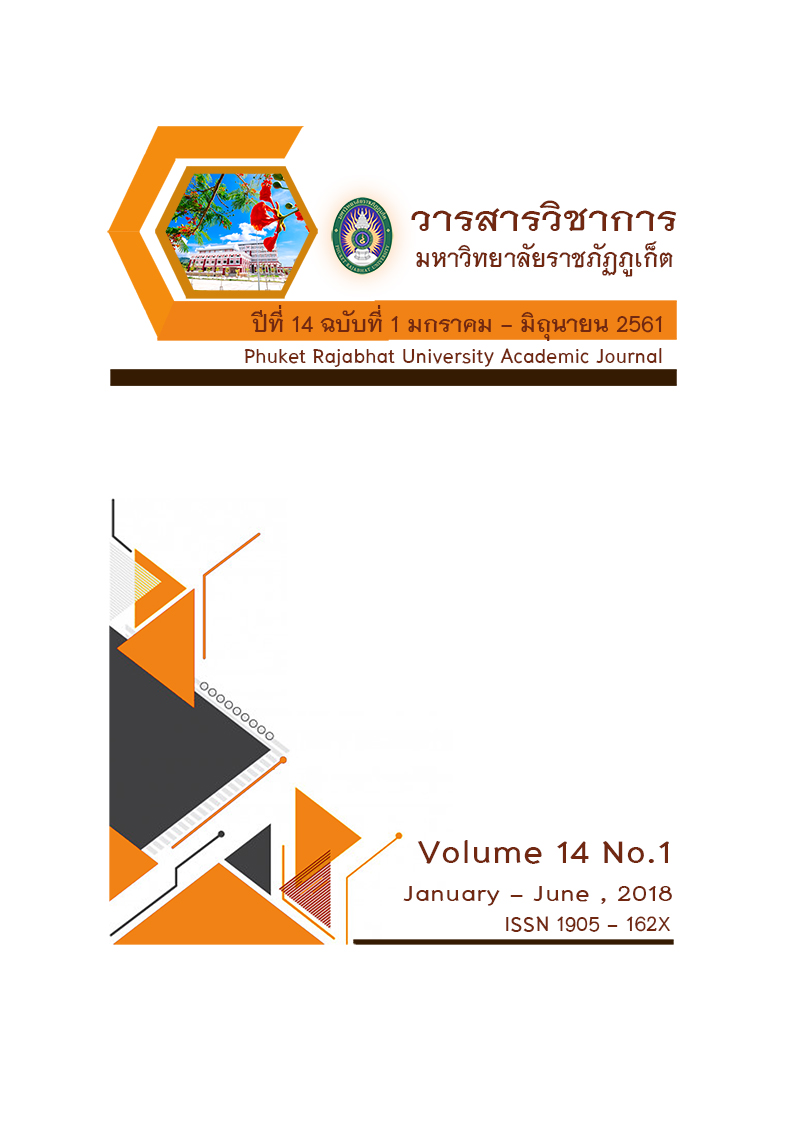แนวปฏิบัติที่เป็นเลิศของการสอนเกมพลศึกษา
Main Article Content
บทคัดย่อ
เกมพลศึกษาหมายถึงกิจกรรมการเคลื่อนไหวร่างกายที่มีการแข่งขัน เป้าหมาย และกติกาที่สามารถปรับเปลี่ยนให้เหมาะสมกับแต่ละสถานการณ์ได้การจำแนกประเภทของเกมพลศึกษาสามารถทำได้โดยยึดหลักสภาพแวดล้อมทางกายภาพ กลุ่มกล้ามเนื้อที่ใช้ และทักษะการเคลื่อนไหวร่างกายเบื้องต้น กระบวนการสอนเกมพลศึกษาที่ดีแบ่งออกเป็น 5 ขั้นตอน ได้แก่ 1) ขั้นเตรียมความพร้อมของผู้เล่น 2) ขั้นนำเสนอเกม 3) ขั้นให้ผู้เล่นทดลองเล่น 4) ขั้นแข่งขัน และ 5) ขั้นสรุปเกมเพื่อความปลอดภัยของผู้เล่นเกมพลศึกษาทั้งผู้สอนเกมและผู้เล่นเกมควรร่วมมือกันสร้างสภาพแวดล้อมที่ปลอดภัย แนวทางการสอนเกมพลศึกษาให้ผู้เล่นรู้สึกเพลิดเพลินมี 8 แนวทาง ได้แก่ 1) ใช้เกมที่เหมาะสมกับระดับความสามารถของผู้เล่น 2) ใช้ทักษะการเคลื่อนไหวร่างกายที่ผู้เล่นเคยได้รับการฝึกฝน 3) กำหนดระดับความท้าทายของเกมจากง่ายสู่ยาก 4) เปลี่ยนเกมให้หลากหลายในแต่ละชั่วโมงสอน 5) เปลี่ยนจากเกมหนึ่งไปยังอีกเกมหนึ่งขณะที่ผู้เล่นกำลังสนุก 6) หลีกเลี่ยงการขัดจังหวะขณะที่ผู้เล่นกำลังสนุกกับเกม 7) นำเสนอวิธีการเล่นเกมด้วยความกระชับ และ 8) กำหนดจำนวน ผู้เล่นให้เหมาะสม แนวทางการสอนเกมพลศึกษาให้ผู้เล่นเห็นคุณค่าตนเองทางกายมี 3 แนวทาง ได้แก่ 1) ชื่นชมเมื่อผู้เล่นแสดงพฤติกรรมที่ปรารถนา 2) กำหนดเป้าหมายของการเล่นเกมโดยพิจารณาจากผลการเล่นที่ทำได้ก่อนหน้า และความเป็นไปได้ที่ผู้เล่นจะทำได้สำเร็จ และ 3) สรุปผลการเล่นเกมโดยเปรียบเทียบผลการเล่นก่อนหน้ากับผลการเล่นปัจจุบัน กระบวนการสอนเกมพลศึกษาให้ผู้เล่นมีน้ำใจนักกีฬามี 3 ขั้นตอน ได้แก่ 1) เขียนข้อความเชิงพฤติกรรมที่แสดงถึงการมีน้ำใจนักกีฬา 2) สอนผู้เล่นเกี่ยวกับน้ำใจนักกีฬา และ 3) สร้างโอกาสให้ผู้เล่นได้ฝึกปฏิบัติพฤติกรรมน้ำใจนักกีฬา
Article Details
เนื้อหาและข้อมูลในบทความที่ลงตีพิมพ์ในวารสารวิชาการมหาวิทยาลัยราชภัฏภูเก็ต ถือเป็นข้อคิดเห็นและความรับผิดชอบของผู้เขียนบทความโดยตรง ซึ่งกองบรรณาธิการวารสารฯ ไม่จำเป็นต้องเห็นด้วยหรือร่วมรับผิดชอบใด ๆ
บทความ ข้อมูล เนื้อหา รูปภาพ ฯลฯ ที่ได้รับการตีพิมพ์ในวารสารวิชาการมหาวิทยาลัยราชภัฏภูเก็ต ถือเป็นลิขสิทธิ์ของวารสารวิชาการมหาวิทยาลัยราชภัฏภูเก็ต หากบุคคลหรือหน่วยงานใดต้องการนำทั้งหมดหรือส่วนหนึ่งส่วนใดไปเผยแพร่ต่อหรือเพื่อกระทำการใด ๆ จะต้องได้รับอนุญาตเป็นลายลักษณ์อักษรจากวารสารวิชาการมหาวิทยาลัยราชภัฏภูเก็ตก่อนเท่านั้น
เอกสารอ้างอิง
ประพัฒน์ ลักษณพิสุทธิ์. (2551). เกมส์พลศึกษา. กรุงเทพฯ : สำนักพิมพ์แห่งจุฬาลงกรณ์ มหาวิทยาลัย.ราชบัณฑิตยสถาน. (2557). พจนานุกรมฉบับราชบัณฑิตยสถาน 2554. พิมพ์ครั้งที่ 2. กรุงเทพฯ : นานมีบุ๊คส์.
Akdeniz, C. (2016). Process and Concepts in Theory and Practice. Gateway East, Singapore: Springer.
Alberto, P. A., and Troutman, T. A. (2009). Applied behavior analysis for teachers. New Jersey : Pearson Education.
Business dictionary. (2017a). Best practice (Online). http://www.businessdictio nary.com/definition/best-practice.html, October 11, 2017.
________. (2017b). Rule (Online). http://www.businessdictionary.com/definition /rule.html, September 7, 2017.
Burton, D., Naylor, S., and Holliday, B. (2001). Goal setting in sport: Investigating the goal effectiveness paradigm. In R. Singer, H. Hausenblas, and C. Janelle (Eds.), Handbook of sport psychology (2nd ed., pp. 497– 528). New York : Wiley.
Beaumont, G., and Whitlam, P. (2008). Safe Practice in Physical Education and School Sport. Chelsea : Coachwise.
Cothran, D., and Kulinna, P. (2014). Classroom management in physical education (Online). https://www.researchgate.net/profile/Pamela_Kulinna/publication/266896295_Classroom_Management_in_Physical_Education/links/54e907c70cf25ba91c7ed365/Classroom-Management-in-Physical-Education.pdf, September 22, 2017.
Clifford, C. and Feezell, R. M. (2010). Sport and character: reclaiming the principles of sportsmanship. Illinois: Human Kinetics.
CECDE. (2005). Early Childhood in Ireland Evidence and Perspectives (Online). http://siolta.ie/media/pdfs/03_early_childhood_in_ireland.pdf, February 21, 2017.
Corbin, B. C., Welk, J. G., Corbin, R. W., and Welk, A. K. (2008). Concepts of physical fitness : active lifestyles for wellness. New York : McGraw-Hill.
Csikszentmihalyi, M. (1990). Flow: the psychology of optimal experience. New York : Harper & Row.
Cratty, B. J. (1964). Movement Behavior and Motor Learning. Philadelphia : Lea & Febiger.
Fox, K. R. (2000). The effects of exercise on self-perceptions and self-esteem. In S .J. H. Biddle, K. R. Fox and S. H. Boutcher (eds), Physical Activity and Psychological Well-being (pp. 88–117). London : Routledge.
Gabbard, C. (2012). Lifelong motor development. San Francisco: Pearson Education.
Gilberts, G., Agran, M., Hughes, C., and Wehmeyer, M. (2001). The effects of peer delivered self-monitoring strategies on the participation of students with severe disabilities in general education classrooms. Journal of the American Society of Hypertension, Vol. 26, pp. 25-36.
Huizenga, J. C., ten Dam, G. T. M., Voogt, J. M., and Admiraal, W. F. (2017). Teacher perceptions of the value of game-based learning in secondary education. Computers & Education, Vol. 110, pp. 105-115.
Haibach, P., Reid, G., and Collier, D. (2011). Motor Learning and Development. Illinois : Human Kinetics.
Hoeger, W. W. K., and Hoeger, S. A. (2010). Principles and Labs for Physical Fitness. California : Wadsworth publishing.
Jennetta, S. (2008). Churchill Livingstone's Dictionary of Sport and Exercise Science and Medicine. Edinburgh : Churchill Livingstone Elsevier.
Krech, P. R., Kulinna, P. H., and Cothran, D. (2010). Development of a short-form version of the physical education classroom instrument: Measuring secondary pupils’ disruptive behaviours. Physical Education and Sport Pedagogy, Vol.15, pp. 209-225.
Longman dictionary. (2017a). Goal (Online). http://www.ldoceonline.com/dic tionary/goal, September 7, 2017.
________. (2017b). Flexibility (Online). http://www.ldoceonline.com/dictionary /flexibility, September 7, 2017.
________. (2017c). Classification (Online). http://www.ldoceonline.com/dictiona ry/classify, July 29, 2017.
Lucardie, D. (2014). The impact of fun and enjoyment on adult’s learning (Online). http://www.sciencedirect.com/science/article/pii/S1877042 814046242, September 20, 2017.
Merriam-Webster dictionary. (2017). Definition of game (Online). https://www. merriam-webster.com/dictionary/game, July 29, 2017.
Macmillan dictionary. (2017). Compete - definition and synonyms (Online). http://www.ldoceonline.com/dictionary/goal, September 7, 2017.
Martens, R. (2012). Successful Coaching. Illinois : Human kinetics.
Nakamura, J., and Csikszentmihalyi, M. (2009). The concept of flow (Online). http://eweaver.myweb.usf.edu/2002-Flow.pdf, September 21, 2017.
NASPE. (2004). Moving into the future: National standards for physical education. Virgenia : NASPE Publications.
O’Hagan, M., and Mangiron, C. (2013). Game Localization: translating for the global digital entertainment industry. Amsterdam : John Benjamins Publishing.
Podstawski, R., Zwolinska, D., and Nowosielska-Swadzba, D. (2015). Problems of safety and risk in physical education (Online). http://www.sportpeda gogy.org.ua/html/journal /2015-10/html-en/15przrpe.html, July 22, 2017.
Sullivan, B., and Thompson, H. (2013). The Plateau Effect: Getting from Stuck to Success. New York : Penguin Group.
Szwejczewski, M., and Jones, M. (2013). Learning from World-Class Manufacturers. London : Palgrave Macmillan.
SNZ. (2012). Good practice principles : Children and young people in sport and recreation (Online). https://www.sportnz.org.nz/assets/Uploads/ attachments/managing-sport/young-people/Good-Practice-Principles-for-the-Provision-of-Sport-and-Recreation-for-Young-People.pdf, August 15, 2017.
Weinberg, R. S. (2002). Goal setting in sport and exercise: Research to practice. In J. Van Raalte and B. Brewer (Eds.), Exploring sport and exercise psychology (2nd ed., pp. 25-44). Washington, DC: American Psychological Association.


